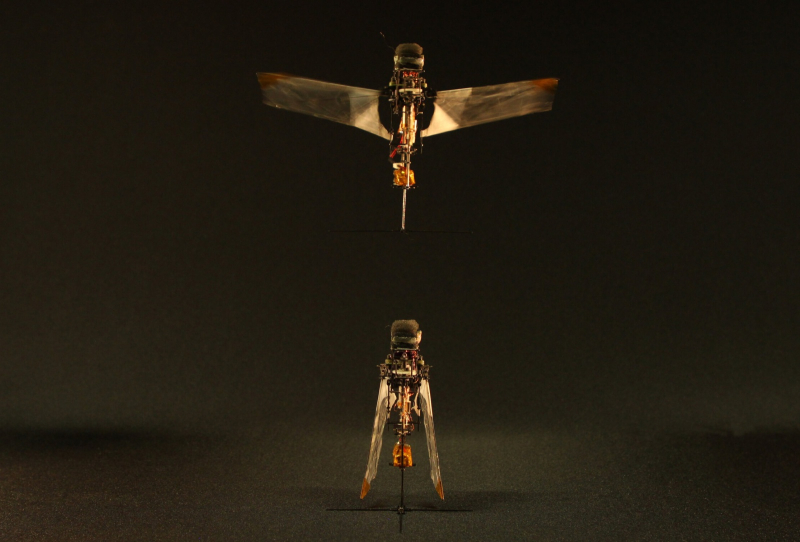Scientists from the École Polytechnique Fédérale de Lausanne and Konkuk University have created a miniature flying robot, inspired by the ability of insects to tuck their wings to their body when at rest and open them to fly. They believe that such a robot “could be used for search and rescue operations in confined spaces. When flight is not possible, the robot can sit on any surface and then switch to other modes of movement.”

Image source: techxplore.com
The idea of creating a robot in the image of an animal is not new. People have been observing the wonders of nature for centuries and are inspired by them for their own inventions. There is a separate science – bionics, and its subsection – biomimetics, which is based on the principle of borrowing ideas and basic elements for new technologies from animals.
For example, a team of engineers at Northwestern University have designed a tiny crab robot, smaller than a flea, that can crawl, bend, and even jump. A robotic drone modeled after a bee mimics insect tactics to save battery power. However, the scientists who created the miniature flying robot, similar to a rhinoceros beetle, claim that their robot is unique because it can fold its wings at rest and open them to take off.
The flying microrobot, developed by the researchers, with folding flapping wings, weighs 18 grams and is about twice the size of a real rhinoceros beetle.
It was previously thought that insects, including beetles, use pectoral muscles to expand and retract their wings, much like birds and bats. Attempts to imitate these actions in robots in the past have focused on replicating the dynamics of beetles’ wings using origami-like structures, without considering the movements at the base of the hind wings.
Researcher Hoang-Vu Phan discovered that the rhinoceros beetle uses its elytra and flapping forces to deploy its hind wings for flight. Then, once the insect stops flying and lands on the surface, it uses the elytra to “push” the hind wings back onto its body. Both actions are passive in nature and do not require the use of the pectoral muscles that support the flight of birds and bats.

«By incorporating this passive mechanism into flapping wing robots, we demonstrated for the first time that, unlike existing robots that lock their wings in a fully extended configuration, our robot can fold its wings along its body at rest,” Fan said.
«For simplicity, we used elastic tendons installed in the armpits, which allow the robot to passively fold its wings,” he said. “By activating the flap, the robot can passively open its wings to take off and maintain stable flight. […] after landing, the wings quickly and passively retract back into the body without the need for any additional actuators.”
The developers’ idea is that robots with folding wings can be used for search and rescue operations in confined spaces. An example would be the entrance to a collapsed building where people cannot enter. Once inside a building, the robot can land, fold its wings, and then walk or crawl.
The flying robotic beetle is currently undergoing testing with very promising results. Once testing is completed, the scientists plan to refine the robot and test its functioning in various real-life scenarios.